After something of a drought of interesting new camera releases through 2018, the camera makers shrugged off their lethargy at the end of the year and the first months of 2019, with a series of technological advances centered on mirrorless technology.
How good are the new offerings from Canon, Nikon and Olympus? (Panasonic’s S1 and S1R are yet to find their way onto the street.) We trawled a few of the more reputable review sites to put together a summary of what the pundits think, and the ratings are remarkably aligned.
The OLYMPUS OM-D E-M1X gained a lot of praise for its performance, if not for its bulk. Among the full-frame releases, the lower-priced NIKON Z6 was the stand-out favourite, garnering more plaudits than its more expensive sibling, the NIKON Z7, while the consensus for the long-awaited CANON EOS R seems to be that is was heading in the right direction – close, but no cigar! Read on:
CANON EOS R
Reviewer: Imaging Resource; William Brawley, Jeremy Gray, Jaron Schneider and Zig Weidelich
Rating: 4/5, ‘Dave’s Pick’
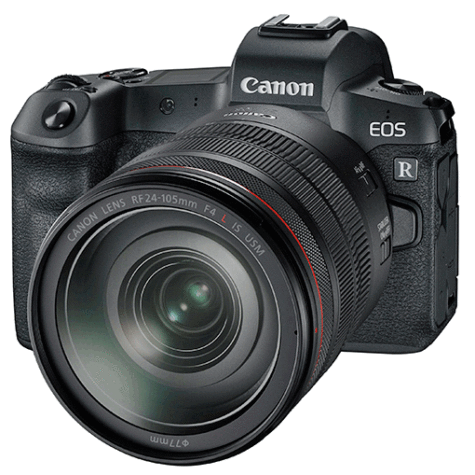 Conclusion: By itself, the Canon EOS R is a very nice camera. It feels great in the hand, it’s compact, it offers solid weather-sealed construction, and it takes excellent photos and very good 4K video. But it’s not a ground-breaking camera. Perhaps future EOS R models will bring more exciting features to the table. Right now, the EOS R feels somewhat limited, especially when it comes to performance. And some of the design choices feel under-utilized or downright confusing or awkward.
Conclusion: By itself, the Canon EOS R is a very nice camera. It feels great in the hand, it’s compact, it offers solid weather-sealed construction, and it takes excellent photos and very good 4K video. But it’s not a ground-breaking camera. Perhaps future EOS R models will bring more exciting features to the table. Right now, the EOS R feels somewhat limited, especially when it comes to performance. And some of the design choices feel under-utilized or downright confusing or awkward.
The Canon EOS R, much like its Nikon Z7/Z6 rivals, feels very much like a full-frame mirrorless camera for current full-frame Canon DSLR owners, rather than trying to bring in new customers or even pull former customers back from other brands. We understand that the EOS R is an all-new system with an all-new lens mount and new lenses, so in some ways it makes sense for Canon to take a slower, more calculated approach to this new full-frame mirrorless R system. However, competition is fierce, especially in the full-frame market, and the EOS R feels out-gunned and out-paced from the start. Right now, it seems that Canon has an uphill battle ahead of them.
All said, however, despite some notable drawbacks, the Canon EOS R is still a very nice camera.
Reviewer: Digital Camera World, James Artaius
Rating: 4 stars
Conclusion: Capable, customisable, but compromised. The Canon EOS R is a great proof of concept, with fantastic features such as the new control ring and M-Fn Bar, and offers tangible upgrades to existing EF and EF-S lenses. While it compares well to a DSLR, though, its cropped 4K, restricted 60 and 120fps, and lack of in-body image stabilisation place it firmly behind Sony and Nikon’s full-frame mirrorless bodies, and now it faces competition from the cheaper EOS RP, too.
FOR:
– Great control customisation;
– Dual Pixel AF with 5655 AF positions;
– Fully articulating screen.
AGAINST:
– No in-body image stabilisation;
-Cropped 4K video;
– Single SD card slot.
Reviewer: DPReview, Carey Rose
Rating: 79 percent
Conclusion: With a 30-megapixel sensor, fantastic colour reproduction and on-sensor autofocus, the EOS R can produce some beautiful photographs with pinpoint-accurate focus. But it’s Canon’s first mirrorless full-frame camera, and in many ways, it shows. The ergonomics feel unfinished, and for the same or less money, you can find better video, more dynamic range and faster burst speeds elsewhere. But we have to admit that Canon’s new RF lenses are simply spectacular, and at this time, the EOS R is the only way to get to use them.
GOOD FOR:
General and social photography, casual video shooters and those looking for either a backup body for their full-frame Canon glass or are looking at building up a collection of new RF lenses.
NOT SO GOOD FOR:
Those looking to shoot sports or fast-moving subjects, those needing the absolute best image quality for either landscape or video work.
Reviewer: Cameralabs; Gordon Laing
Rating: Three-and-a-half stars
Conclusion: The Canon EOS R is a full-frame mirrorless camera that both impresses and disappoints. On the plus-side it delivers good-looking photos, has a promising new mount with two exotic lenses at launch, great video autofocus, and the best performance from adapted EF lenses on a mirrorless camera. On the downside, there’s no built-in stabilisation, only a single SD card slot, severely cropped 4k video, modest action shooting capabilities, and lacklustre face and eye-detection – plus those first native lenses don’t exactly make for a compact system. Be under no illusions, if you’re not brand-loyal and are simply looking for the most capable full-frame mirrorless camera around, then the Sony A7 III comfortably out-performs it in almost every regard, has way more native lenses and also does a fair job with adapted EF lenses; it’s slightly cheaper too.
If you’re a faithful Canon owner though, the EOS R becomes more compelling and is their best mirrorless camera to date. Still photographers will enjoy one of Canon’s best sensors coupled with its excellent colour science, while videographers will appreciate the fully-articulated screen and C-log with 10-bit output at a much lower price than a Cinema camera. I’d say it makes most sense to EOS 5D I, II or III owners, or those with mid-range APSC bodies like the EOS 80D who are looking for an upgrade as well as a smooth transition to mirrorless that works well with existing lenses. It’s also appealing to Canon Cinema owners looking for a B-camera to match their output. Ultimately the EOS R a version one product entering a market where Sony is comfortably selling its third generation bodies and an extensive range of native lenses. As such, the EOS R inevitably struggles to compete, but still shows promise in some key respects. Right now this first body only makes sense to specific Canon owners, but certainly there’s a lot of promise – especially with the lens mount – and I look forward to seeing where Canon takes it.
NIKON Z7
Reviewer: Imaging Resource; Mike Tomkins, Jeremy Gray, Zig Weidelich and Dave Pardue
Rating: Pro Camera of 2018 and ‘Dave’s Pick’
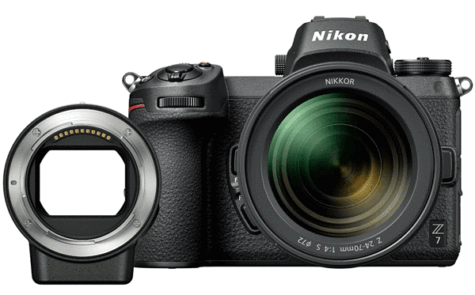 Conclusion: In nearly every way in both lab and real-world testing, the Nikon Z7 was competent or excelled, performing incredibly well in a wide variety of situations. The camera’s body and design are familiar yet improved in meaningful ways, while offering a much lighter and more compact body than Nikon’s full-frame DSLR cameras. The image quality is excellent, the new hybrid autofocus system is generally quick and accurate, and it’s about time IBIS was offered in a Nikon. For users demanding high-quality video, the Z7 offers that as well, plus many videographer-friendly features. However, for those wanting better video features, as well as a bit more oomph in the performance department, the Nikon Z6 is perhaps a better choice if you’re willing to drop down to 24MP stills.
Conclusion: In nearly every way in both lab and real-world testing, the Nikon Z7 was competent or excelled, performing incredibly well in a wide variety of situations. The camera’s body and design are familiar yet improved in meaningful ways, while offering a much lighter and more compact body than Nikon’s full-frame DSLR cameras. The image quality is excellent, the new hybrid autofocus system is generally quick and accurate, and it’s about time IBIS was offered in a Nikon. For users demanding high-quality video, the Z7 offers that as well, plus many videographer-friendly features. However, for those wanting better video features, as well as a bit more oomph in the performance department, the Nikon Z6 is perhaps a better choice if you’re willing to drop down to 24MP stills.
The new Z-mount lenses released so far are also quite impressive, especially the 35mm f/1.8 Sand 50mm f/1.8 S primes which are both very sharp lenses. The small 24-70mm f/4 S zoom lens is a great travel lens that’s sharp and lightweight, however the lens relies a bit heavily on software corrections (likely a compromise to get size and weight down). And the just-announced 14-30mm f/4 S lens look to be an excellent optic for landscape and architectural photographers. Overall, the Z Mount has a lot of potential, and we’re excited to see what the future holds.
Is the Z7 perfect? Of course not, no camera is, especially not one which is the first of a brand-new system. There are still a few kinks to be ironed out and some areas to be refined, and you can tell that some of the other players have been making mirrorless cameras longer than Nikon. Hopefully most of the foibles will be addressed with firmware updates. In fact, at this year’s CES, Nikon announced firmware updates that will add new features, such as Eye AF, to both the Z7 and Z6 cameras, so there are already updates in the works.
Overall though, when taking image quality, performance, features, build quality, ergonomics and size all into account, it’s clear the Nikon Z7 is one heck of a camera.
Reviewer: Digital Camera World; Rod Lawton
Rating: Four-and-a-half stars
Conclusion: With straight fives for features, build & handling and performance, the Nikon Z7 is an instant classic. It’s a superb (and superbly made) mirrorless camera.
FOR:
– Very good handling;
– Great Megapixel/fps balance;
– Sensor-based VR works well;
– Superb EVF
AGAINST:
– Single XQD card slot;
– Only three S lenses this year;
– Lenses are pricey on their own
Reviewer: DPReview; Dan Bracaglia, Richard Butler, Rishi Sanyal
Rating: 89 percent (Silver Award)
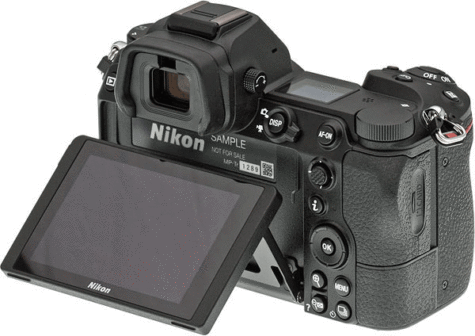 Conclusion: The Nikon Z7 is an extremely well-rounded digital camera and suitable for a wide range of photographic and video needs. It packs outstanding image quality and very good 4K video in a lightweight, well-built package with in-body image stabilisation. Autofocus is less reliable than the competition and the buffer can be limiting for fast action, but overall, the Z7 is a pleasure to shoot with.
Conclusion: The Nikon Z7 is an extremely well-rounded digital camera and suitable for a wide range of photographic and video needs. It packs outstanding image quality and very good 4K video in a lightweight, well-built package with in-body image stabilisation. Autofocus is less reliable than the competition and the buffer can be limiting for fast action, but overall, the Z7 is a pleasure to shoot with.
GOOD FOR:
Hybrid stills and video shooters, photographers looking for a versatile tool for a wide range of subjects in a compact package.
NOT SO GOOD FOR:
Those needing class-leading autofocus performance, faster burst rates, or greater buffer depth.
Reviewer: Cameralabs; Gordon Laing
Rating: Four stars, ‘Cameralabs Recommended’
Conclusion: The Z7 gives you 45 Megapixels, phase-detect AF across most of the frame, built-in stabilisation, 4k video up to 30p, 9fps bursts and Wifi with Bluetooth. In terms of image quality, it’ll essentially match the highly-respected D850 for resolution and noise, not to mention dynamic range in all but the most extreme cases. The embedded phase-detect AF transforms the video experience over previous Nikon cameras and the movie quality, especially in the DX format equals the best of its rivals too. The Z7 will also continuously focus fairly well at its top speed of 9fps, but the lack of effective live feedback even at the lower speed of 5.5fps coupled with a limited buffer mean it’s not best-suited to action photography, especially compared to Sony. Arguably the biggest downsides though are the lack of twin card slots and a modest selection of native lenses at launch, although the FTZ adapter does a respectable job at autofocusing recent Nikon DSLR lenses, easing the transition for existing Nikon owners.
If you’re not committed to the Nikon system, Sony’s A7r III provides a compelling and slightly cheaper alternative with a decent selection of native lenses right now, not to mention twin card slots, eye detection, a pixel-shift composite mode and more successful performance for action. Ultimately the Z7 is an impressive start to the Z-system and one that’s very satisfying for a version-one product. Nikon’s hit the ground running with a camera I greatly enjoyed using and can easily recommend, particularly if you own existing F-mount lenses.
NIKON Z6
Reviewer: Imaging Resource; Jeremy Gray, William Brawley
Rating: Not yet rated
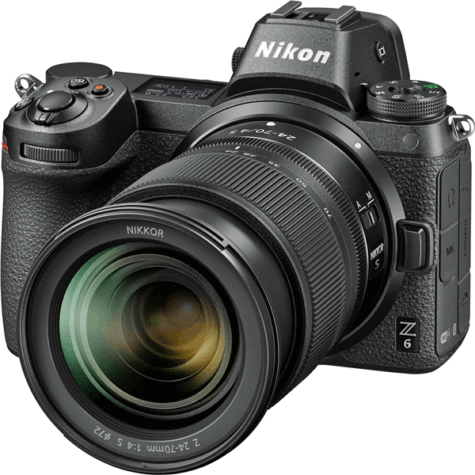 First Impressions: Overall, the Nikon Z6 is shaping up to be a very nice, all-around, enthusiast-grade mirrorless camera. Based on my experience thus far, I’m having a hard time finding any sizable criticism for the Z6. The image quality is fantastic, as is characteristic of modern Nikon cameras, and the build quality is superb. The camera feels great in the hand, offering lots of physical controls despite the smaller body design. For long-time Nikon shooters, the Z6’s controls will feel familiar, which is by design. However, as someone who’s not a “Nikonian,” I still found the Z6 was easy to pick up and operate without much, if any, confusion.
First Impressions: Overall, the Nikon Z6 is shaping up to be a very nice, all-around, enthusiast-grade mirrorless camera. Based on my experience thus far, I’m having a hard time finding any sizable criticism for the Z6. The image quality is fantastic, as is characteristic of modern Nikon cameras, and the build quality is superb. The camera feels great in the hand, offering lots of physical controls despite the smaller body design. For long-time Nikon shooters, the Z6’s controls will feel familiar, which is by design. However, as someone who’s not a “Nikonian,” I still found the Z6 was easy to pick up and operate without much, if any, confusion.
Now, if I had to nit-pick, then yes, the single XQD card slot can be annoying. For one, XQD cards aren’t all that common yet and are still fairly expensive. Secondly, I can certainly understand wanting two memory card slots for backup security. For me, personally, my feeling is that if a camera has two slots, then great! But it’s not a deal-breaker for me or the type of photography I shoot. Other than this, I’m struggling to find any serious fault with the Nikon Z6. The camera feels great, works great and produces great photographs. I honestly can’t ask for much more.
Reviewer: Digital Camera World; Rod Lawton
Rating: 5 Stars
Conclusion: The Nikon Z6 is always going to be somewhat overshadowed by the more powerful and higher-resolution Z7, but actually it’s a much more versatile camera, as well as being much more affordable. On paper it could easily come across as being a little bit dull but worthy; in practice its finesse, performance and image quality are just awesome. Every camera has flaws and weaknesses, but the Z6 almost squeezes them out of existence.
FOR:
– 12fps burst mode;
– Superb high-ISO quality;
– In-body stabilisation;
– Full frame 4K video;
– Stellar Z-mount lenses.
AGAINST:
Weak 310-shot battery life;
Average buffer capacity;
Some viewfinder lag.
Reviewer: DPReview; Jeff Keller, Richard Butler
Rating: 88 percent, ‘Silver Award’
Conclusion: The Nikon Z6 is a well-built full-frame mirrorless camera that produces excellent stills and 4K video. Autofocus is reliable most of the time, including during burst shooting, though selecting a subject on which to track is clumsy. The camera’s built-in image stabilization works well on native and ‘classic’ Nikon glass. Battery life isn’t class-leading, and some improvements related to manual focus in video should be addressed, but overall Nikon has a winner in the Z6.
GOOD FOR:
– Everyday shooting, video
NOT SO GOOD FOR:
– Sports and action
OLYMPUS OM-D E-M1X
Reviewer: Digital Camera World; James Artaius
Rating: 5 stars
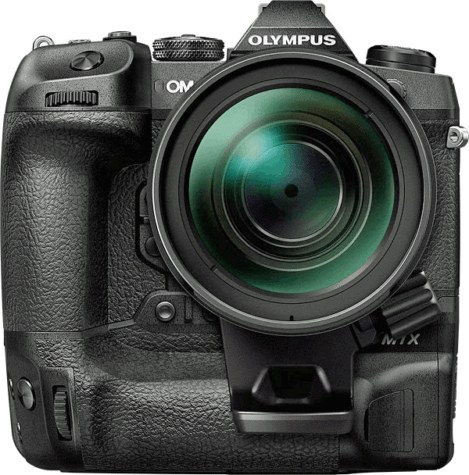 Conclusion: In an industry where innovation is often limited to ‘more megapixels’, this camera has more brilliant new features than we’ve seen in a very long while. If size isn’t a factor, this is undoubtedly the ultimate Micro Four Thirds camera. And, if you ignore the narrative about sensor size, this is arguably the ultimate mirrorless camera, period.
Conclusion: In an industry where innovation is often limited to ‘more megapixels’, this camera has more brilliant new features than we’ve seen in a very long while. If size isn’t a factor, this is undoubtedly the ultimate Micro Four Thirds camera. And, if you ignore the narrative about sensor size, this is arguably the ultimate mirrorless camera, period.
FOR:
– 80-megapixel tripod high-res;
– 50-megapixel handheld high-res;
– Up to 7.5 stops of image stabilisation;
– Customisable, Tetris-like AF points;
– Joystick control
AGAINST:
– ‘Bulky’ for Micro Four Thirds;
– ‘Pricey’ for Micro Four Thirds.
Reviewer: Cameralabs; Gordon Laing
Rating: 4 Stars
Conclusion: The Olympus OM-D E-M1X is a beefed-up EM1 Mark II, repackaging its 20-megapixel sensor, 4k movies and 18fps bursts into a larger and tougher body with an integrated portrait grip, twin batteries, field sensors, improved autofocus tracking, USB power and even better built-in stabilisation. The result is a camera that can confidently handle action and wildlife shooting while shrugging-off cold, wet or dusty environments. The stabilisation is remarkably good, letting me handhold 8 second exposures or film at 600mm without wobbles. Indeed the E-M1X is all about achieving the kind of results handheld that would normally require a tripod or gimbal, which coupled with the mobility of a smaller sensor system makes for a more portable kit you’d be happier to lug across a sports field or especially into the backcountry.
But there’s no 4k at 60p, the viewfinder is relatively low-res and crucially the quality and many of its unique features are already available in the EM1 Mark II at almost half the price. And lest we forget, the EM1 II itself occupies a fiercely competitive category with stiff competition from multiple rivals sporting decent action credentials and often larger sensors; models like the Lumix G9, Nikon D500, Fujifilm XT3 and Sony A7 III. Then at the high-end, the E-M1X may be comfortably cheaper than pro bodies from Canon, Nikon and Sony, but they all feature much larger full-frame sensors which deliver cleaner results at the kind of high ISOs sports and wildlife shooters often need to deploy. And while the Olympus feature-set makes the pro DSLRs look old-fashioned, Sony’s A9 is a much tougher modern rival costing only one third more. So I can’t help but think those who buy-into the Olympus mobility message and exploit the unique feature-set will find it hard to make the price-leap from the EM1 Mark II, and those who want to build a higher-end sports system with better low-light capabilities will invest in an A9.
But sometimes you have to stop over-analysing. Yes the E-M1X is a specialist body with a correspondingly limited audience, and there’s no getting away from the fact it’s the largest, heaviest and most expensive Micro Four Thirds camera to date, but it’s a camera I still enjoyed shooting with immensely. It looks and feels great, is tougher than anything at the price and delivers good results backed-up by some truly unique and industry-leading tech.





Be First to Comment